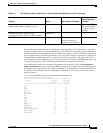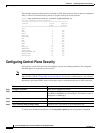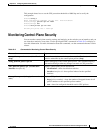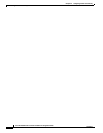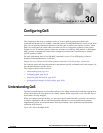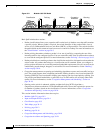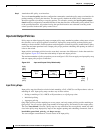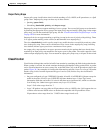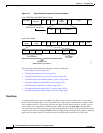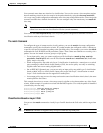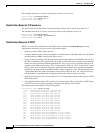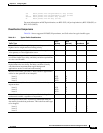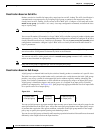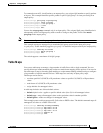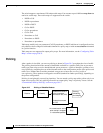
30-5
Cisco ME 3400 Ethernet Access Switch Software Configuration Guide
78-17058-01
Chapter 30 Configuring QoS
Understanding QoS
Output Policy Maps
Output policy map classification criteria include matching a CoS, a DSCP, an IP precedence, or a QoS
group values. Output policy maps can have any of these actions:
• Queuing (queue-limit)
• Scheduling (bandwidth, priority, and shape average)
Output policy maps do not support matching of access groups. You can use QoS groups as an alternative
by matching the appropriate access group in the input policy map and setting a QoS group. In the output
policy map, you can then match the QoS group. See the “Classification Based on QoS Groups” section
on page 30-10 for more information.
Output policies do not support marking or policing (except in the case of priority with policing). There
is no egress packet marking on the switch (no set command in an output policy).
The class class-default is used in a policy map for any traffic that does not explicitly match any other
class in the policy map. There can be a maximum of four classes in the output policy map (including
class-default) because egress ports have a maximum of four queues.
An output policy map attached to an egress port must match only the packets that have already been
matched by an input policy map attached to the ingress port for the packet. The switch supports a limit
of three unique output policy maps. You can attach an output policy map to any or all ports on the switch.
Classification
Classification distinguishes one kind of traffic from another by examining the fields in the packet header.
When a packet is received, the switch examines the header and identifies all key packet fields. A packet
can be classified based on an access-control list, or the DSCP, the CoS, or the IP precedence value in the
packet. Figure 30-3 has examples of classification information carried in a Layer 2 or a Layer 3 IP packet
header, using six bits from the deprecated IP type of service (ToS) field to carry the classification
information.
• On ports configured as Layer 2 IEEE 802.1Q trunks, all traffic is in IEEE 802.1Q frames except for
traffic in the native VLAN. Layer 2 IEEE 802.1Q frame headers have a 2-byte Tag Control
Information field that carries the CoS value in the three most-significant bits, which are called the
User Priority bits. Other frame types cannot carry Layer 2 CoS values.
Layer 2 CoS values range from 0 to 7.
• Layer 3 IP packets can carry either an IP precedence value or a DSCP value. QoS supports the use
of either value because DSCP values are backward-compatible with IP precedence values.
IP precedence values range from 0 to 7. DSCP values range from 0 to 63.



